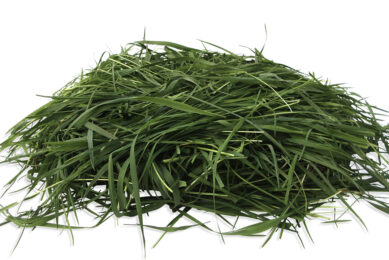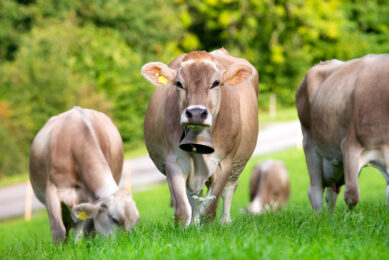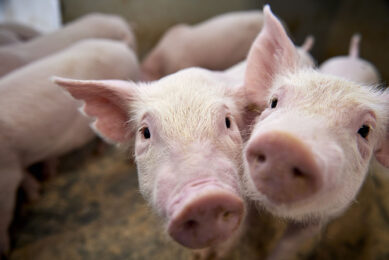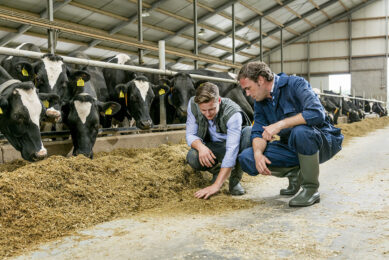Munch, munch: Cow chewing unravelled
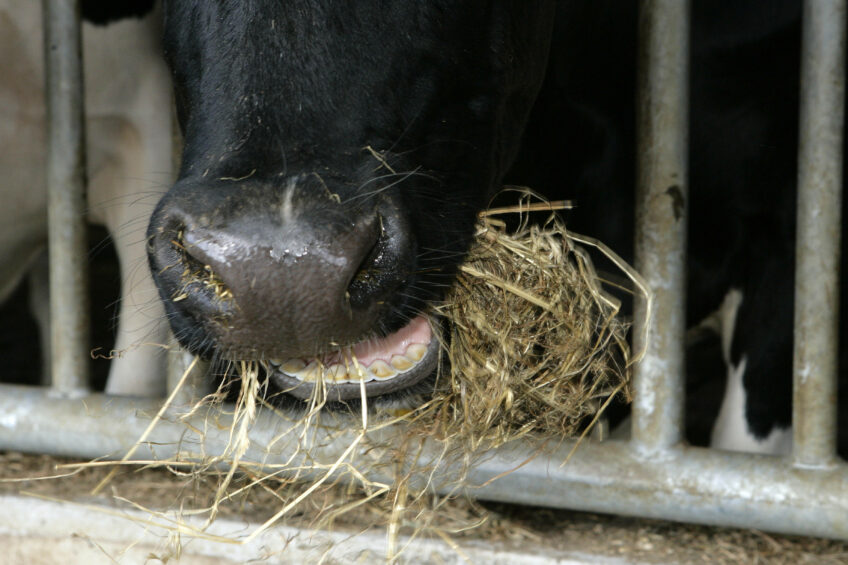
The chewing time of cows is affected by many factors, most importantly whether access to feed is restricted, intake of neutral detergent fibre from forages, and mean particle size of the diet.
This is one of the characteristics of the chewing in cattle, written in a recent review. In this paper, published in the Journal of Dairy Science, the authors compiled a comprehensive understanding of the dietary, animal, and management factors that affect eating and ruminating behaviour in dairy cows. The paper also presents an overview of the physiological importance of chewing with emphasis on recent developments and practical implications for feeding and managing the modern housed dairy cow.

The dairy cow has changed
Many early studies laid the foundation for our understanding of the mechanics of chewing, the physiological role of chewing for the cow, and how chewing behaviour is affected by dietary characteristics. However, the dairy cow has changed significantly over the past decades, as have the types of diets fed and the production systems used. The plethora of literature published in recent years provides new insights on eating and ruminating activity of dairy cows. Lactating dairy cows spend about 4.5 h/d eating (range: 2.4–8.5 h/d) and 7 h/d ruminating (range: 2.5–10.5 h/d), with a maximum total chewing time of 16 h/d. The authors write that chewing time is affected by many factors, most importantly whether access to feed is restricted, intake of neutral detergent fibre from forages, and mean particle size of the diet. Feed restriction and long particles (≥19 mm) have a greater effect on eating time, whereas intake of forage neutral detergent fibre and medium particles (4–19 mm) affects rumination time. It is well entrenched in the literature that promoting chewing increases salivary secretion of dairy cows, which helps reduce the risk of acidosis. However, the net effect of a change in chewing time on rumen buffing is likely rather small; therefore, acidosis prevention strategies need to be broad.
Use of sensor technology
Rumination and eating are the main ways in which feed is reduced in particle size. Contractions of the rumen increase during eating and ruminating activity and help move small particles to the escapable pool and into the omasum. Use of recently developed low-cost sensors that monitor chewing activity of dairy cows in commercial facilities can provide information that is helpful in management decisions, especially when combined with other criteria. Although accuracy and precision can vary somewhat depending on sensor and conditions of use, relative changes in cow behaviour, such as a marked decrease in rumination time of a cow or sustained low rumination time compared with a contemporary group of cows, can be used to help detect oestrus, parturition, and some illnesses.
Differences between breeds
The article also describes the current knowledge on differences per breed. Aikman et al. (2008) reported important differences in chewing behaviour between Holstein and Jersey cows of similar intake capacity when expressed relative to BW (DMI, % of BW). As expected, Holsteins had greater daily DMI (kg/d) than Jerseys; however, eating time (min/d) did not differ between breeds. Thus, Jerseys spent more time eating per unit of ingested feed, which the authors suggest may have been partially due to the smaller mouths of Jerseys requiring them to have a larger number of mouthfuls to process an equal volume of feed. The duration and number of meals consumed were similar for the 2 breeds, but the meals consumed by Jerseys tended to be distributed more evenly throughout each 24-h period, providing a more regular supply of feed and saliva to the rumen. Holsteins spent more time ruminating per day compared with Jerseys, but Jerseys spent more time ruminating per unit of ingested feed.
Predicting chewing time
Predicting the time that cows spend chewing or ruminating can be a valuable management tool in terms of optimising cow health, but the accuracy can be low because of the many interacting factors. Chewing time of feeds, or chewing index (CI; min/kg of DM), is highly variable. Jensen et al. (2016) reported for 80 diets that CI of TMR averaged 35.1, ranging from 24.6 to 62.5, whereas CI of diets with separate ingredient feeding averaged 38.2, ranging from 30.2 to 49.4. In the meta-analysis of Zebeli et al. (2006), CI ranged from 17.9 to 47.1 (n = 99), with a mean of 30.1. A CI ≥30 has been considered by some as desirable for optimum rumen function, as discussed by Zebeli et al. (2006).
Conclusions
The review evaluates past and recent information on chewing behaviour of dairy cows. Eating time and ruminating time are affected by both chemical and physical characteristics of the diet, but other factors such as feeding management, cow variability, and health can have equally large effects on chewing time. These effects are not considered in prediction equations of chewing time. Chewing is critical for promoting salivation, particle size reduction, microbial digestion, and passage of undigested material from the rumen, but the effect of a change in chewing time on these functions is difficult to quantify. Recently developed low-cost sensors that monitor chewing activity of dairy cows in commercial facilities can provide information that can be helpful in management decisions, especially when combined with other criteria.
Join 13,000+ subscribers
Subscribe to our newsletter to stay updated about all the need-to-know content in the dairy sector, two times a week.



